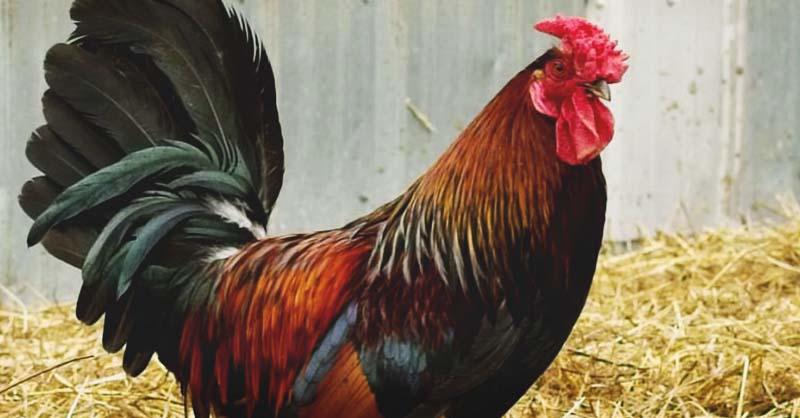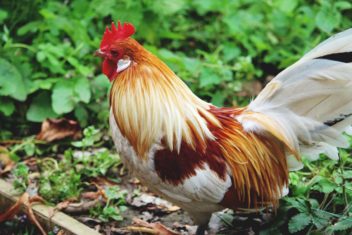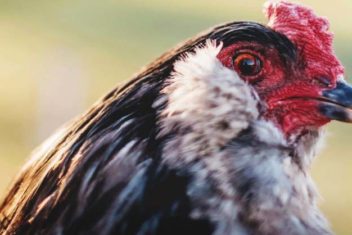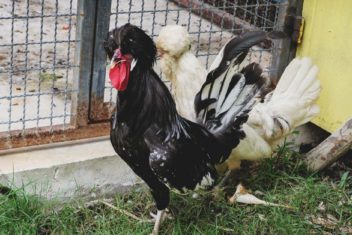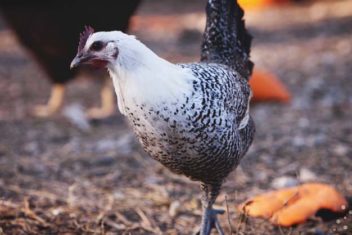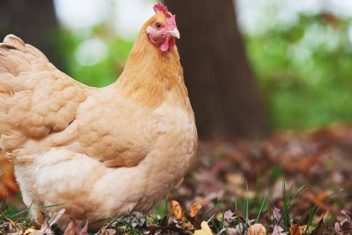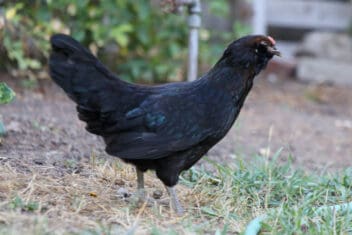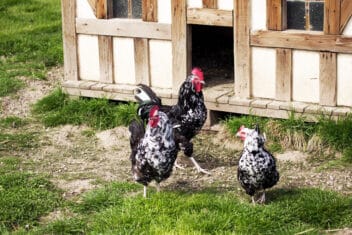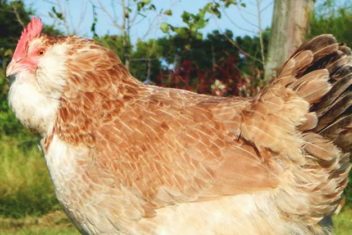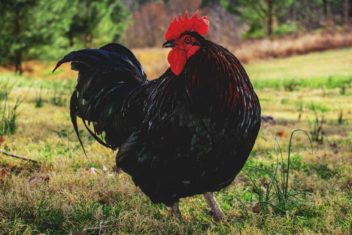Derbyshire Redcap Chickens is a fantastic breed for the homesteader wanting a steady production of both meat and eggs. Many people have never heard of this breed, but it needs some popularity to keep its declining numbers up and away from extinction.
The large red comb on top of the Derbyshire Redcap’s head is one very unique and amusing part of the breed.
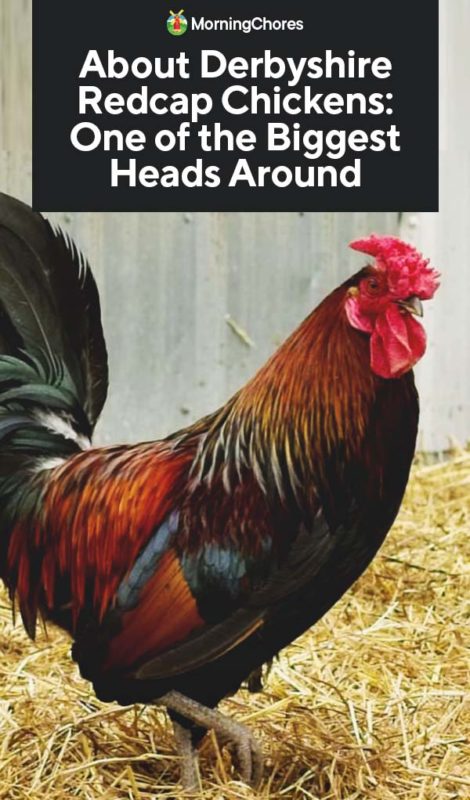
About the Derbyshire Redcap Chickens
This fun and exciting breed originated in the English county of Derbyshire around the early 19th century. There is no exact record of the original breeds that went into the Derbyshire Redcap. Speculation has deduced that some likely breeds in the original Derbyshire Redcap lineage include Black Breasted Red Games, Dorkings, and Old English Pheasant Fowl.
In 1888, the Derbyshire Redcap was accepted into the American Poultry Association. Despite the versatility this breed holds, it is at risk of endangerment, as listed by the livestock conservancy.
Derbyshire Redcap Characteristics
1. Size and Weight
Since this is a dual purpose breed, they are reasonably large chickens. Derbyshire Redcap roosters weigh in at 7.5 pounds on average. A Derbyshire Redcap hen weighs in at approximately 6 pounds fully grown.
2. Temperament
This is not the most friendly and personable breed out there. However, they are hardy and active, making them a good breed for free-ranging and evading predators. Hens are not likely to go broody, so you can’t count on them to be good mothers.
3. Egg Production
If your sole goal in chicken keeping is an abundance of eggs, this might not be the ideal breed for you. However, this doesn’t mean Derbyshire Redcap is a poor producer. These chickens have medium egg production and perform well for a dual purpose breed.
4. Meat Production
As a dual purpose breed, this chicken makes a decent pick for meat production. If you want a premium choice for meat, you’ll want to choose a breed that is streamlined and bred specifically for meat production.
However, for the farmer that wants a convenient 2 in 1 breed, this is a great bird. Hens have tender skin, making a spent hen a great candidate for the dinner table.
Derbyshire Redcap Chicken Care
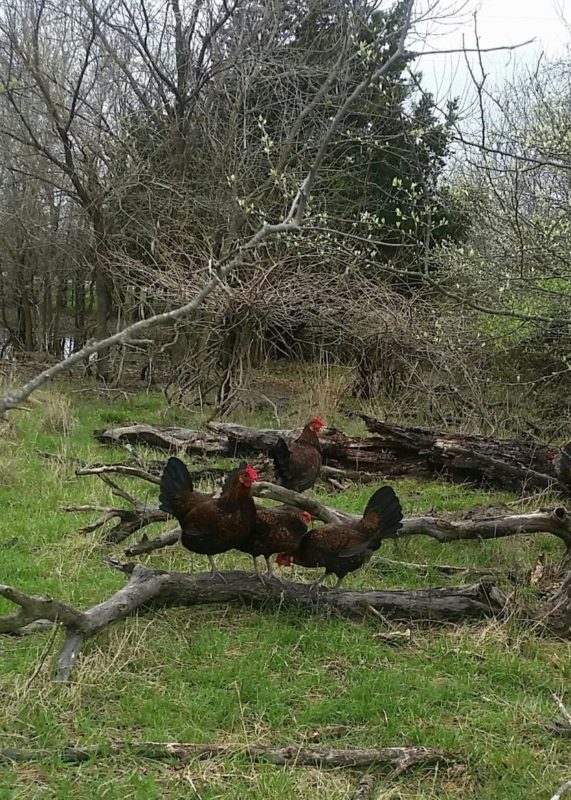
1. Feeding and Nutrition
Derbyshire Redcap chicks need to start off life with a good quality chick starter/grower for the first several weeks of their life. Once your chicks are between 16-18 weeks of age, transition them to a good laying feed.
It’s a good idea to provide supplemental calcium in a separate dish for your laying hens to eat as they need it for their egg production. If you’re fattening up your chickens for meat processing time, some safe food scraps can give them a little bit of extra chub for your dinner plate.
2. Housing and Fencing
All chickens need a safe place to escape from predators and the elements. For your henhouse, make sure that you account four square feet per bird so that everyone has room.
The Derbyshire Redcap is an excellent forager and does well free-ranging if you choose to do so. In the case of a run, make sure each bird has a minimum of 10 square feet per chicken.
3. Health Issues and Care
Attentive chicken keepers will observe their flock on a daily basis to keep an eye out for any potential problems. Some things to look out for include excessive sneezing, runny eyes, runny nose, lethargy, lack of appetite, and generally acting off. As you get to know your flock, you know when something is a bit off.
One thing that is important to prevent and keep an eye out for is external and internal parasites. Keep a clean coop and readily available dust bath for combating lice and mites. You can add products such as wood ash or diatomaceous earth to a dust bath to deter these pesky bugs.
Watch out for internal parasites too! Worms can drain the life out of their host. Medications can be bought to treat for worms, as well as a myriad of natural remedies and preventative measures are available. Garlic, Apple Cider Vinegar and Oregano help prevent and treat internal parasites.
4. Breeding
One interesting thing about the Derbyshire Redcap chickens makes them a breed that isn’t for the instant gratification breeder. When breeding for appearance, you’ll need to wait 2-3 years for color patterns to fully emerge. This can make it harder to breed Derbyshire Redcaps, but it is a rewarding process.
Breed Alternatives
1. Wyandotte
The Wyandotte is a fun breed with some gorgeous feathers and the same comb type as the Derbyshire Redcap. Wyandottes are also a dual purpose breed and are more readily available from hatcheries than Derbyshire Redcaps are.
Did you Know?
Unlike many breeds of chickens, there is no bantam variety of the Derbyshire Redcap.
This a great breed for any homesteader after a dual purpose breed with a unique twist. The huge comb on top of these heads is fun and quirky. You will appreciate the addition to your homestead and the properties of this versatile chicken.

